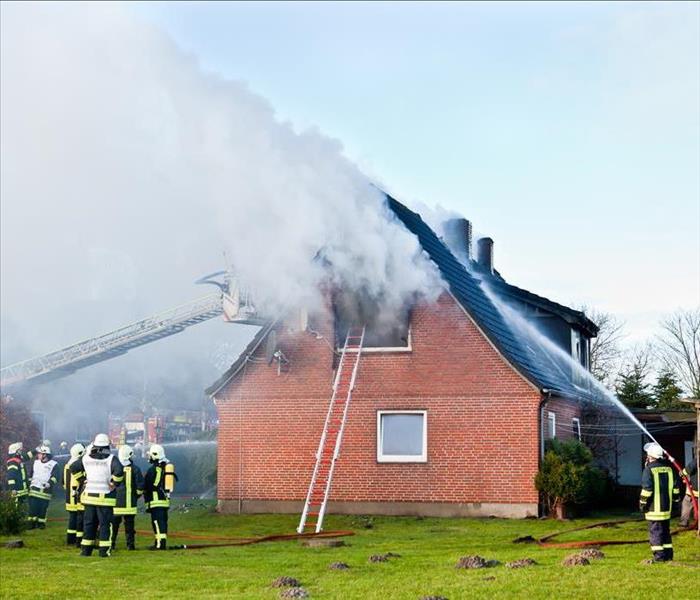Risks of Property Flooding After a Fire
6/23/2022 (Permalink)
Property Flooding Risks Following a Fire
The FEMA NFIP, or national flood insurance program, is one way the federal government hopes to protect homeowners against flood damage, especially through unexpected circumstances, such as fire floods. According to flood damage restoration services in Florence, KY, flooding after a fire is more common than many homeowners think.
1. Suppression and Rescue System Flooding Damage
Most flooding actually occurs during rescue efforts. Firefighters use specialized hoses which unleash hundreds of gallons of water on a house every minute. While the water is effective for subduing and smothering flames, it will not all evaporate in the heat.
Additionally, if your house is outfitted with a sprinkler system, it too can lead to flooding. Most sprinkler systems do not work selectively, meaning when it goes off, it goes off everywhere in the house or structure.
2. Storm Flooding
The FEMA NFIP can also protect against other possible floods after a fire, including those brought about by storm surges. Additionally, when your home experiences fire damage, it might have several holes through the exterior walls or the roof. Rain can access these points, resulting in flooding.
3. Damaged Infrastructure Flooding
Unless you live in certain areas, you might not consider the relationship between wildfire damage and flooding. Again, rescue efforts can result in flooding and water damage. However, wildfire can also damage critical infrastructure, such as water towers or city sewers, resulting in flooding in residential areas.
4. Damaged Plumbing
It is also possible that the heat from the house fire melts or damages plumbing within the household. The damage can affect supply lines, which can lead to extensive flooding in the property if the supply is not shut down externally.
The FEMA NFIP program is a valuable tool for families with flood zones. Still, it is necessary to understand that not all flooding stems from storm systems or fractured infrastructure.

 24/7 Emergency Service
24/7 Emergency Service
